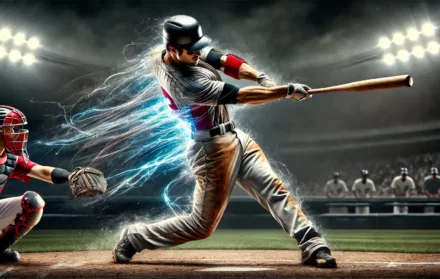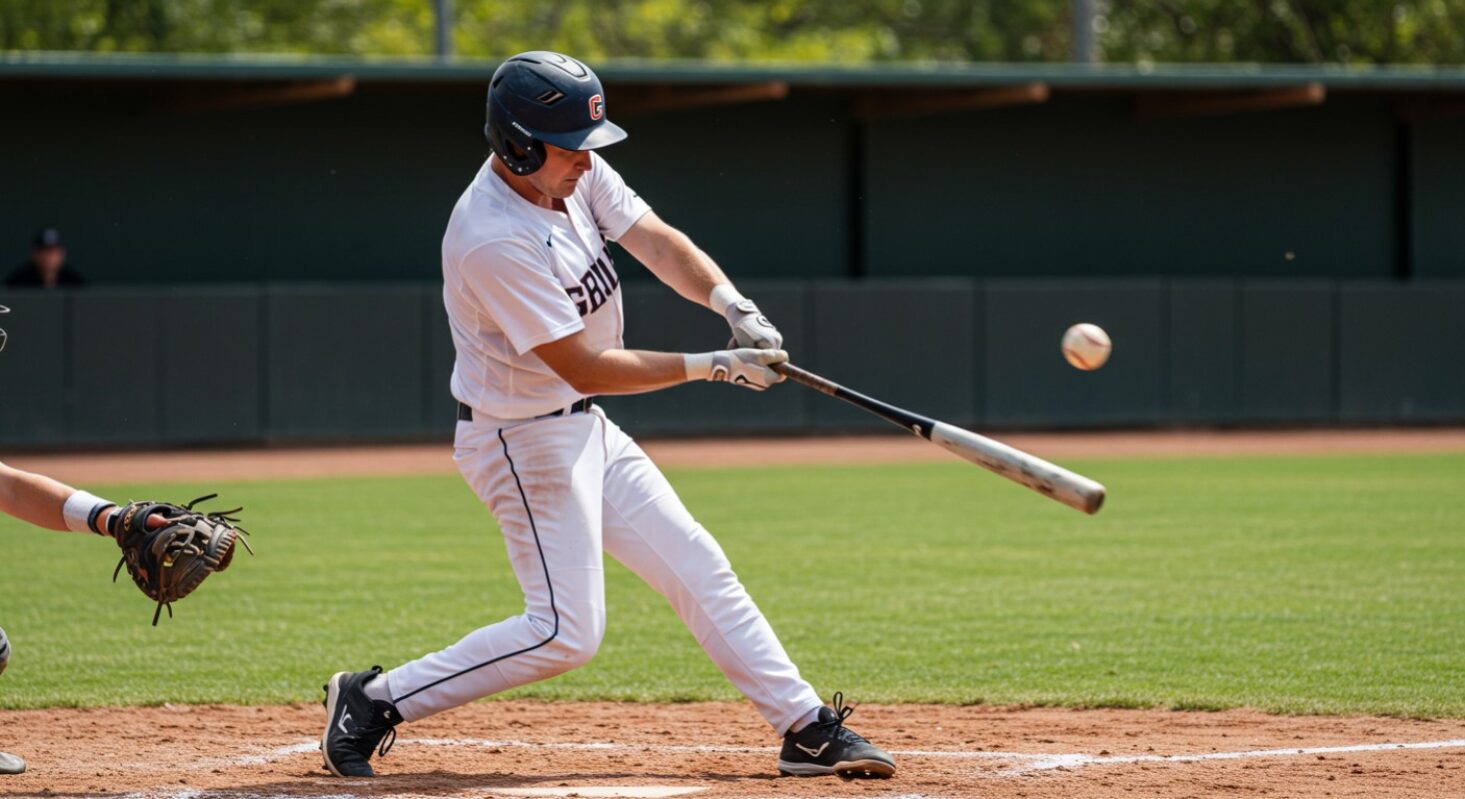
What Are the Different Types of Hits in Baseball?
Baseball is often described as a game of moments, and few moments carry as much excitement as a well-timed hit. A “hit” is one of the most fundamental achievements in the sport, occurring when a batter strikes the ball into fair territory and safely reaches base without the benefit of an error or fielder’s choice. To fans, it looks simple — the batter connects and sprints — but in reality, each hit carries statistical weight and strategic meaning.
Hits are the foundation of batting statistics. A player’s batting average, one of the oldest and most recognisable stats in the sport, depends entirely on hits in a baseball pitch. More advanced measures like slugging percentage and on-base plus slugging (OPS) also rely heavily on them. But beyond the numbers, hits are how runs are created. Without hits, there are no base runners, and without base runners, there are no scores.
Understanding the different types of hits in baseball not only helps fans read the box score more intelligently but also reveals how varied batting contributions can be. A single keeps the line moving, a double sets up scoring opportunities, and a home run can change a game instantly. In this guide, we’ll break down the main categories of hits, explore their significance, and highlight the feats that make hitting such a central part of baseball.
The Basic Types of Hits
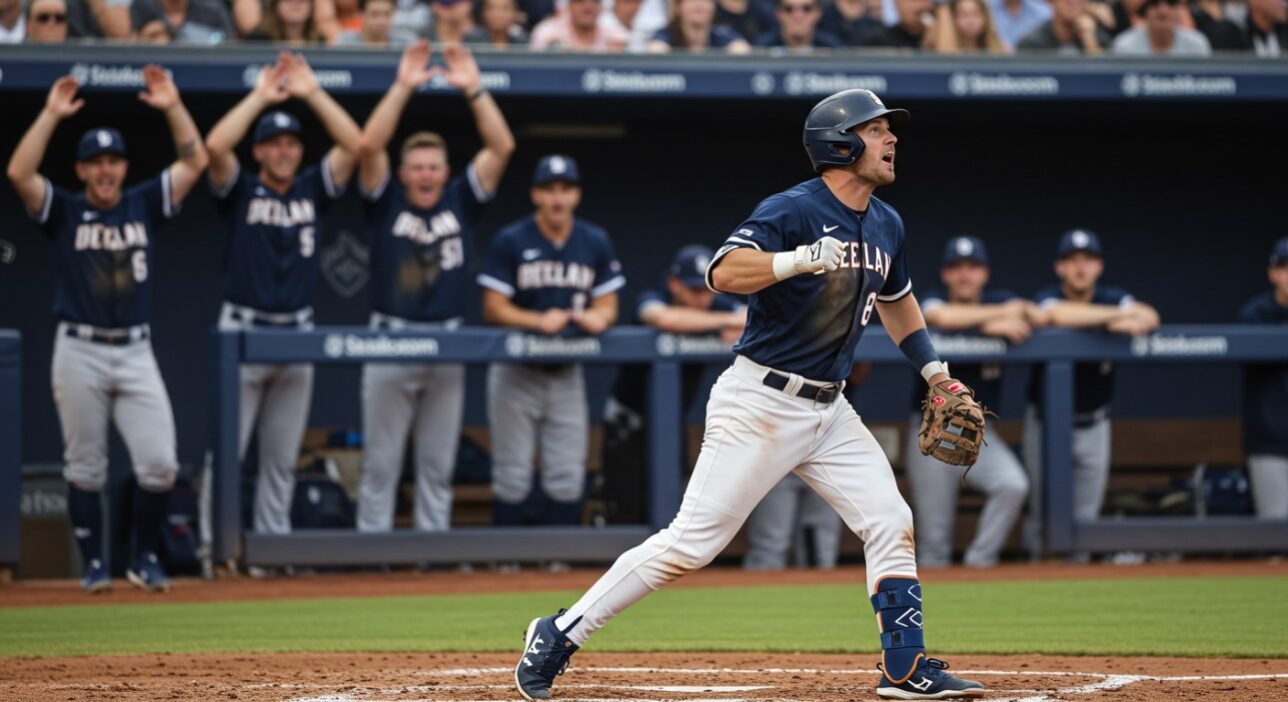
When people talk about “a hit” in baseball, they are usually referring to one of four standard outcomes: single, double, triple, and home run. These form the backbone of hitting statistics and strategy.
1. Single
A single occurs when the batter successfully reaches first base. It is the most common type of hit in baseball and often the simplest to visualise: a clean ground ball through the infield or a soft line drive into the outfield. While singles may not appear as dramatic as a towering home run, they are essential for keeping innings alive. Players who specialise in making consistent contact often rack up high numbers of singles, helping them maintain strong batting averages. Singles are particularly important for leadoff hitters, whose job is to reach base and set the stage for power hitters later in the lineup.
2. Double
A double takes the batter safely to second base. Doubles usually occur when the ball is hit hard into the gaps between outfielders or down the foul lines, where it rolls far enough to give the batter time to advance. They are more valuable than singles because they immediately put the batter in scoring position. Doubles often showcase both a batter’s power and placement, as hitting into the gaps consistently requires skill. Teams rely on doubles hitters to turn innings into scoring opportunities by getting themselves into positions where a single from the next batter can drive them home.
3. Triple
A triple is among the rarest and most exciting types of hits. It happens when the batter reaches third base on a single swing, usually by driving the ball deep into the outfield or taking advantage of an unusual bounce. Triples require not only well-placed hits but also considerable speed, since the batter has to race around the bases before the fielders can relay the ball back in. Players who combine strong contact hitting with speed are often the leaders in triples, and the excitement of seeing a batter leg out a triple remains one of baseball’s most thrilling spectacles.
4. Home Run
The most celebrated of all hits is the home run, where the batter scores by circling all four bases in one play. Most home runs are achieved by hitting the ball over the outfield fence in fair territory, but an inside-the-park home run (covered later) also counts. Home runs provide maximum impact: not only does the batter score, but any runners already on base score as well. They are the ultimate display of batting power and have shaped the careers of legends such as Babe Ruth, Hank Aaron, and Barry Bonds. While less common than singles or doubles, home runs remain the hit most likely to electrify a crowd.
Each of these four basic hits carries its own level of difficulty and value, but together they form the language of baseball offence.
Comparison of the Four Basic Types of Hits in Baseball
| Hit Type | Definition | Typical Difficulty | Scoring Value | Common Situations |
|---|---|---|---|---|
| Single | Batter reaches first base safely. | Easiest to achieve; requires solid contact. | Moves batter to first; can advance runners one base. | Ground balls through infield, soft line drives. |
| Double | Batter reaches second base safely. | Moderate; needs power and placement into outfield gaps. | Immediately places batter in scoring position. | Line drives to the gaps, balls down the foul lines. |
| Triple | Batter reaches third base safely. | Rare and challenging; requires both ball placement and speed. | High scoring potential with one swing. | Deep drives into spacious outfields, quick batters exploiting bounces. |
| Home Run | Batter circles all bases in one swing. | Most celebrated; requires significant power or speed (inside-the-park). | Scores batter and all base runners. | Over-the-fence hits, rare inside-the-park runs. |
Extra-Base Hits Explained
The term extra-base hit refers collectively to doubles, triples, and home runs — essentially, any hit where the batter earns more than one base. These hits are particularly valuable because they advance the batter further around the bases without needing additional help from teammates.
From a statistical perspective, extra-base hits are crucial in evaluating a batter’s overall power and efficiency. Unlike batting average, which treats all hits equally, slugging percentage weights extra-base hits more heavily, rewarding players who can produce runs with fewer swings. A batter who collects many doubles and home runs will have a much higher slugging rate than one who collects only singles, even if their batting averages are similar.
For teams, extra-base hits are prized because they move runners quickly into scoring positions and can swing the momentum of a game. A double with runners on base might score a run or two, while a home run clears the bases entirely. That is why players known for consistent extra-base hitting often anchor the middle of batting lineups.
Special & Situational Hits
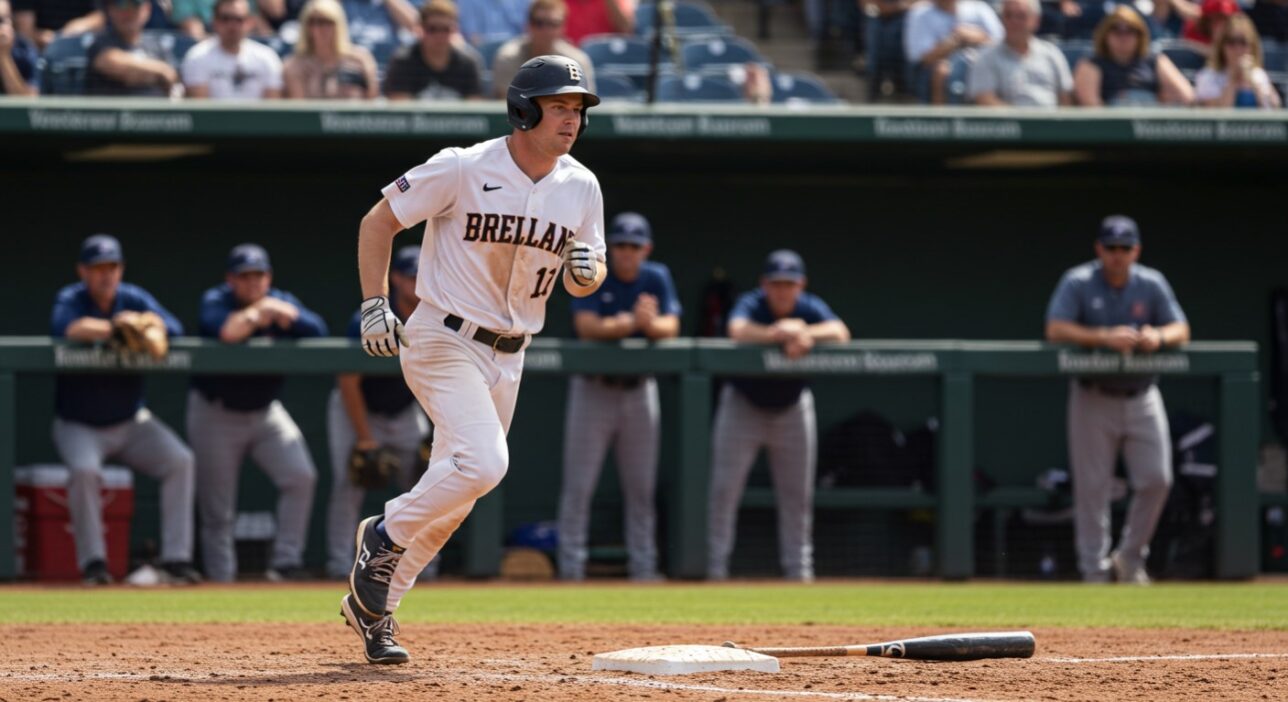
Beyond the core categories, baseball has a handful of special or situational hits that add flavour to the game.
-
Infield Hit: This occurs when the batter hits a ball that stays within the infield, yet manages to reach first base safely. Usually, it happens because the batter’s speed beats the throw from an infielder. Infield hits are common among quick players and can frustrate defences even when the ball is fielded cleanly.
-
Ground-Rule Double: Sometimes a hit is automatically ruled a double by the umpires. This happens when the ball bounces in fair territory and then goes over the outfield fence, or if it becomes lodged in the fence. In such cases, regardless of how far the batter might have run, they are awarded second base.
-
Inside-the-Park Home Run: Unlike the standard home run, this rare event happens when a batter circles all the bases while the ball remains in play. Usually, it requires a ball hit deep into the outfield and some misjudgment or a deflection by the fielders, combined with the batter’s exceptional speed.
These situational hits highlight the variety and unpredictability of baseball, where speed, placement, and circumstance all combine to create drama.
How Scoring & Rules Define Hits
Not every ball put into play is recorded as a hit. The rules for official scorers are clear and sometimes complex. For a play to be scored as a hit, the batter must reach base cleanly without the aid of an error (a defensive mistake) or a fielder’s choice (when the defence chooses to get another runner out instead of the batter). For example, if a ground ball is bobbled by a shortstop, allowing the batter to reach first, it is not a hit but an error.
Another important factor is fair versus foul territory. A hit only counts if the ball lands or passes through fair territory before being fielded. Balls that land outside the foul lines, even if far and powerful, are not hits at all.
These definitions matter because they affect player statistics, which in turn affect contracts, reputations, and team strategies. Scorers often face close judgement calls, and debates about whether a play should have been a hit or an error are common among fans and broadcasters.
Impact on Player Statistics
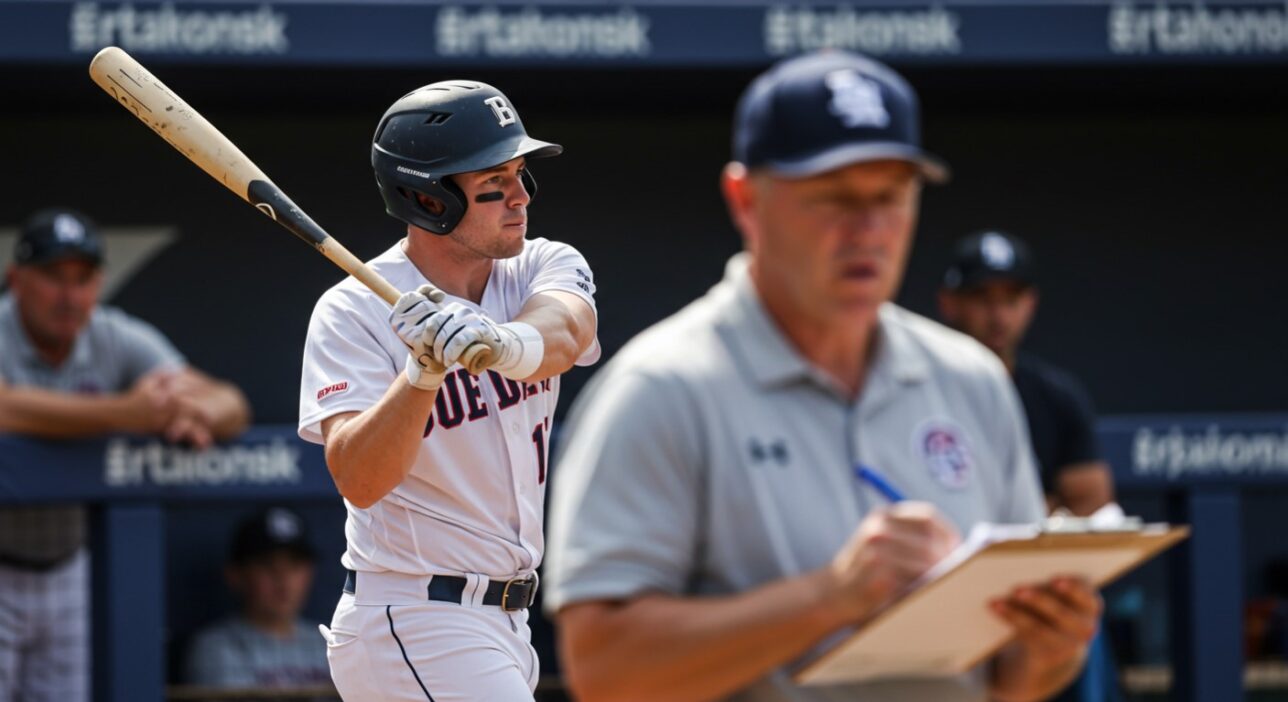
Hits are central to a player’s statistical profile. The simplest measure is the batting average, which divides the number of hits by official at-bats. In this measure, all hits count equally: a single carries the same weight as a home run. Success here depends not only on mechanics and timing, but also on sharp hand–eye coordination that allows batters to square up the ball consistently.
However, to reflect the added value of extra-base hits, analysts use slugging percentage. This statistic calculates the total number of bases a player earns from hits and divides it by at-bats. Thus, a player who collects more doubles, triples, and home runs will score higher.
Further still, advanced stats like on-base plus slugging (OPS) combine the ability to get on base (through hits and walks) with power hitting. These stats reveal not just how often a player hits, but how effectively those hits contribute to run creation. Understanding how hits affect statistics is crucial for evaluating player performance beyond raw numbers.
Famous Examples & Interesting Feats
Baseball history is filled with players renowned for specific hitting feats. Some, like Pete Rose, collected immense numbers of singles, while others, such as Hank Aaron and Barry Bonds, became legends through their home run totals. Players like Stan Musial stood out for doubles, while speedsters like Willie Wilson and Jose Reyes were known for legging out triples.
One of the rarest and most celebrated achievements is hitting for the cycle, where a player records a single, double, triple, and home run in the same game. This feat demonstrates versatility and skill across all types of hits, and only a handful of players achieve it each season.
These stories underscore that hits are not just statistics; they create memorable moments that define careers and thrill fans.
Conclusion: Different Types of Hits in Baseball

Hits are the lifeblood of baseball offence. Whether it’s a simple single to move a runner along, a double that puts pressure on the defence, or a home run that brings the crowd to its feet, each type of hit contributes to the rhythm and outcome of a game.
By understanding the distinctions between singles, doubles, triples, and home runs — as well as situational hits and their statistical impact — fans can better appreciate the nuances of the sport. For players, mastering different types of hits can mean the difference between being a role player and a star. Ultimately, hits tell the story of baseball: from tactical small-ball strategies to explosive power displays, they remain the moments that define the game.


